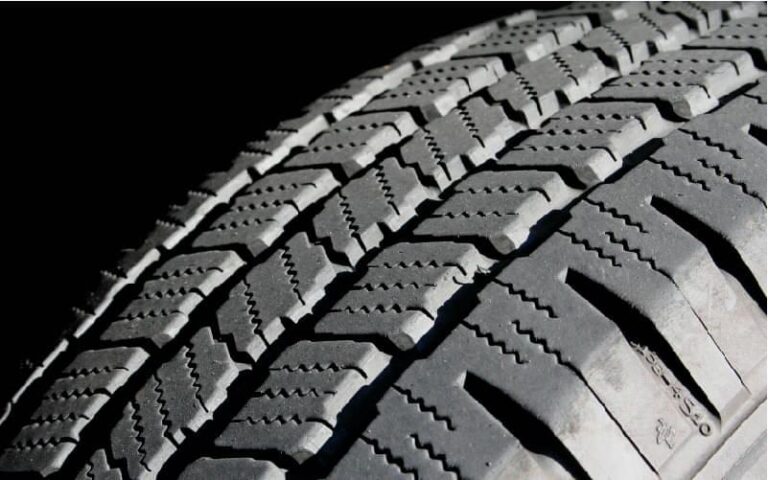Have you ever wondered why tire makers highlight the tread design of their tires? It is because the tread of a tire has a particular purpose for the tire’s performance. The number one role of the tire’s tread is to increase the tire’s friction on the road. But how do tire treads increase friction?
The tire’s tread allows the tire to achieve solid traction on wet roads by evacuating water and slush to ensure that the road friction is not lost. The tire tread allows the tire to bite stronger on muddy or snowy roads. On off-road terrains, the tire’s tread ensures that the tire can establish a firm grip on gravels and rocks.
The primary roles of the tire’s tread are to prevent the loss of road traction and avoid instances of spinning, skidding, and hydroplaning. Also, to make sure that cornering and braking are safe.
Difference Between Friction and Traction
We sometimes tend to use these two words interchangeably. But are they the same? We can define friction as a resisting force that resists the motion of two surfaces (the tire and the road surface). In other words, it doesn’t help in moving your vehicle forward.
Friction is a general physical expression, while traction can refer to the friction between a drive wheel and the road surface. Losing road traction means losing surface grip.
I am afraid you will get lost if we continue with the technical stuff. So, let’s drop it and make things simple.
Friction and traction are technically different, but it all boils down to friction. Increasing the tire’s level of traction requires a certain amount of friction.
Friction in Wet Roads
If you’ve read a couple of tire reviews, you probably have some ideas about how the tire manufacturers design the tread of most tires to ensure the delivery of outstanding grip on wet roads. The use of lateral notches, wide circumferential grooves, zigzag sipes, and other features is prominent.
Some brands also use their breakthrough technologies to ace the competition when driving on wet surfaces. All of these products promise anti-hydroplaning capabilities and excellent cornering and braking performance.
Treads increase the tire’s friction with the road because they act as the channel for the water under the tire surface so that the tire can maintain a firm hold of the road even when you drive in the rain.
Friction in Ice/Snow
In the same way as to how the tread efficiently improves traction on wet roads, it also is responsible for ensuring excellent traction on ice and snow.
All-season tires often offer snow capabilities. How does it deliver such a performance on this challenging road? Most of these tires feature deeper grooves combined with an arrow-like design that creates biting edges. Biting edges are responsible for the tire’s ability to bite snow so that it can continue rolling without skidding.
These types of tires also use a high-grip all-season compound to provide added grip.
Friction in Dry Roads
When it comes to dry and paved roads, the tread does not help so much in increasing friction. A study reveals that tires with treadless tires work better on this type of road condition. The only problem is, the weather is very unpredictable. It can be sunny now, but it could rain hard later. So, your car tires should be ready for unexpected conditions.
Imagine yourself driving your SUV in the rain with a tire that does not have a tread. It is going to be a huge safety concern for you and your passenger. Thus, friction is still a must to ensure safe driving.
There are specific cars that use treadless tires, like the F1 cars. These types of types are usually called “slicks.” Race cars do install these types of tires to achieve more vigorous friction and more control. The only trouble is the complete loss of friction when it rains.
Friction on Off-Roads
You can never go off-road without a tire that features a deep tread to ensure enhanced friction when you drive over gravel and rocks—this situation where off-road tires become a necessity. On dirty roads, this deep tread functions as the tire’s hand that firmly holds the ground.
Maximum grip on loose surfaces is not a question for off-road tires. They are reliable in that area. However, if you drive your car on the highway, your drive may not be that comfortable, and you might feel that you are not in complete control because of the less traction it provides.
Summary
Tire treads are essential to ensure safety. They help prevent instances of spinning, skidding, and hydroplaning. On wet surfaces, the tread is responsible for dispersing the excess water underneath the tire.
The patterns and biting edges on the tread allow the tire to anchor your vehicle on ice and snow. Then on off-roads, the tread ensures that the tire can maintain contact on loose surfaces and slippery rock.

